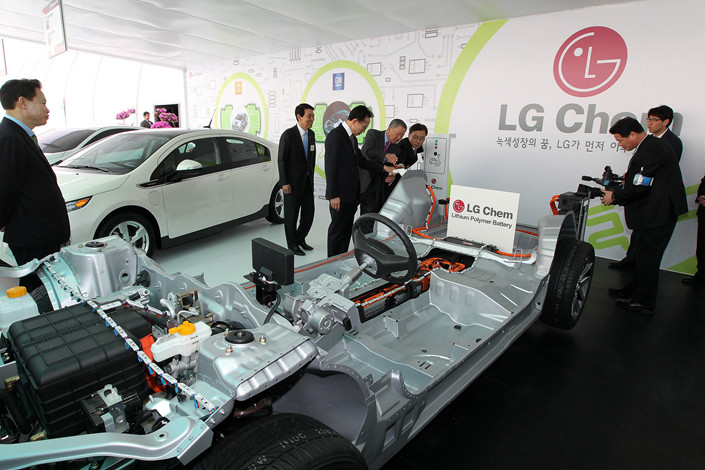LG Chem to Pump $1 Billion Into Nanjing Battery Complex

South Korea’s LG Chem Ltd. said it will invest more than $1 billion on new battery-production capacity in the eastern city of Nanjing, tapping demand in both China and globally for storage products that are a central component of renewable energy cars and power plants.
The plan will see LG Chem pour 1.2 trillion won ($1.07 billion) into the new Nanjing complex, about half of which will go for electric vehicle and small battery production, the company said in a Thursday announcement (link in Korean) on its website. It held a signing ceremony the previous day to finalize the investment, which will be made over the next two years.
The investment is focused on production of batteries that are typically used in light electric vehicles, as well as other devices like power tools.
“Through this expansion, we will lead the global market in areas such as light electric vehicles and power tools,” said Kim Jong-hyun, president of LG Chem’s battery division, at the signing ceremony. “We will actively nurture three battery factories in Nanjing as Asian and global export bases.”
Announcement of the contract signing comes a half year after LG Chem announced it would invest about 2 trillion won through 2023 on a second manufacturing base in Nanjing. The company has existing battery-production facilities in the city dating back as early as 2004.
The big new investment comes as Beijing aggressively promotes the adoption of clean technologies, many reliant on batteries, in a bid to clean up the country’s air and promote the development of cutting-edge technologies. The nation is already the world’s largest electric car market, with sales of new energy vehicles passing the 1 million mark for the first time last year.
China is also aggressively promoting the development of new energy power production like solar and wind farms, which require big facilities to store electricity during periods of slower demand. The nation approved its first large battery storage pilot project last month in Gansu province, with initial investment of 1.2 billion yuan ($177 million) and capacity of 720 megawatt hours and storage duration of four hours.
The gold rush has also spawned a generation of homegrown battery makers led by Contemporary Amperex Technology Co. Ltd., which has piggybacked on Beijing’s generous policy support to become the world’s largest producer since its founding in 2011.
Contact reporter Yang Ge (geyang@caixin.com)

- 1Cover Story: Chinese Medicine Injections Face Rigorous Regulation for the First Time
- 2France to Receive New Panda Pair Under Renewed 10-Year Deal With China
- 3Wingtech Rebuts Nexperia Claims as Control Fight Threatens Global Chip Supply
- 4 China Flu Cases Surge to Highest Level Since 2022
- 5BYD Overhauls Payment System as China Tightens Oversight
- 1Power To The People: Pintec Serves A Booming Consumer Class
- 2Largest hotel group in Europe accepts UnionPay
- 3UnionPay mobile QuickPass debuts in Hong Kong
- 4UnionPay International launches premium catering privilege U Dining Collection
- 5UnionPay International’s U Plan has covered over 1600 stores overseas






